A Guide to the Cuts of Beef Part Seven
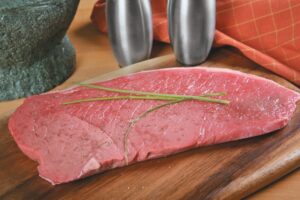
The Purpose of the Post:
In my previous blog post, ‘A Guide to the Cuts of Beef Part Six’, I delved into the distinctions between Porterhouse and T-Bone Steaks. I discussed how butchers or meat processors discern when to transition from cutting Porterhouses to crafting T-Bone Steaks. Additionally, I explored the process of removing the bone from the Short Loin and examined two resultant cuts: the Filet Mignon and Strip Steaks (NY Strip). It’s essential to understand that the Tenderloin is extracted from the Short Loin before the bone is removed. In this installment, we’ll continue our exploration of the remaining cuts from the Short Loin not covered in the previous blog post. If you missed ‘A Guide to the Cuts of Beef Part Six’, you could catch up on it here.
Something to keep in Mind:
The Short Loin is undeniably intricate and often perplexing for consumers due to its processing variability. The way it’s handled depends entirely on the butcher or meat processor. In ‘A Guide to the Cuts of Beef Part Six’, I detailed scenarios where the Tenderloin remains intact, along with the bone. I discussed how butchers may opt to produce three Porterhouse Steaks and three T-Bone Steaks from the Short Loin, emphasizing that its size correlates with the cow’s dimensions. Yet, even after these cuts, some Short Loin remains. In such cases, the butcher must extract the Tenderloin for Filet Mignon Steaks. However, they can opt to leave the bone, resulting in bone-in Strip Steaks, offering flexibility in processing while maintaining the integrity of the cut.
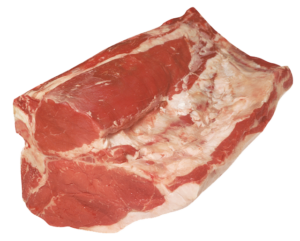
A Refresher:
- Point One: In various regions or contexts, “Beef-Sirloin” and “Short-Loin” may be used interchangeably, although they may refer to slightly different sections of the carcass. Broadly, “Beef-Sirloin” might encompass a larger area, potentially extending into parts of the Round.
- Point Two: Both terms, Short-Loin and Beef-Sirloin, are often used interchangeably, including by myself. However, it’s important to clarify that these cuts are obtained from the hindquarter of the cow (steer). The separation process involves making an incision under the ball joint with a semi-stiff boning knife, followed by finishing the cut with a hand saw, effectively separating the Short-Loin/Beef-Sirloin from the Round.
- Point Three: The Short-Loin/Beef-Sirloin is classified as a sub-primal cut within the Eight Primal cuts derived from a half-side of a cow (steer).
- Point Four: When engaging with your butcher, it’s crucial to seek clarification on their preferred terminology: “Excuse me, could you please clarify the term you use for the sub-primal cut located beneath the Round? I’ve heard it referred to as both Short-Loin and Beef-Sirloin. Could you let me know which term you prefer or commonly use? I want to ensure we’re on the same page regarding the cut I’m looking for.”
- Point Five: During the separation of the Short-Loin from the Round, the initial step for the butcher or meat processor is to remove the Beef-Sirloin.
The Boneless Beef-Sirloin Steak:
The Beef-Sirloin is the initial cut extracted from the Short-Loin using a bandsaw. Depending on their preference, the butcher or meat processor may choose to process the Beef-Sirloin immediately or set it aside for later, focusing first on completing the processing of the Short-Loin. In processing the Beef-Sirloin, the butcher or meat processor begins by removing the front portion of the attached Tenderloin, which is then cut into Fillet Mignon Steaks. Since boneless Beef-Sirloin Steaks are desired, the bone is extracted from the Beef-Sirloin using a semi-stiff boning knife. It’s essential to note that the bone typically runs along the top or dorsal side of the cut, and during bone removal, the butcher or meat processor maintains a tight grip with their knife against the bone. With the bone removed, the beef sirloin can be further processed into both roasts and steaks. However, it’s common for butchers and meat processors to cut the beef sirloin into boneless or bone-in steaks due to its tenderness and suitability for grilling or pan-searing. It’s important to understand that if the bone is not removed from the Beef-Sirloin, it will yield Bone-In Beef Sirloin Steaks.
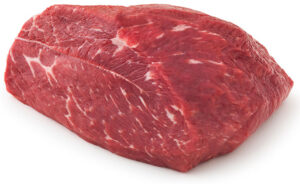
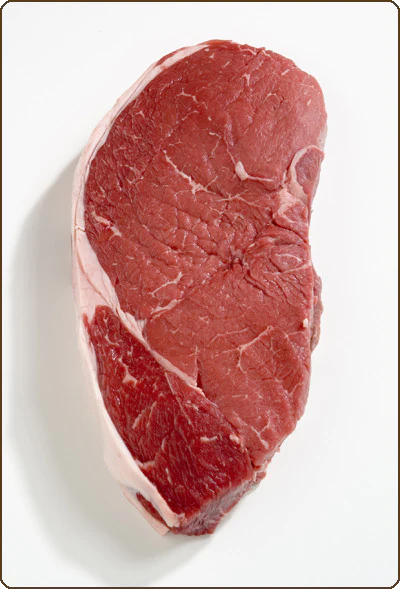
The Picanha:
The Picanha, also known as the Sirloin-Cap, is a flavorful and tender cut of beef located just beneath the Beef-Sirloin. When the butcher or meat processor chooses to extract the Picanha/Sirloin-Cap, they make a cut just below the beef sirloin, effectively separating the two cuts of meat along their natural seam. Although the Picanha is technically a roast, it can also be sliced into steaks, and it’s often featured in Brazilian Steak Houses. It’s worth noting that removing the Picanha from the Beef-Sirloin may alter the overall shape and appearance of the remaining beef sirloin, potentially influencing how subsequent steaks are cut. However, whether the bone is present or not in the Beef-Sirloin doesn’t directly affect the Picanha; it remains a distinct cut derived from the Beef-Sirloin.
The Round:
The Round is the final cut to the hindquarter that the butcher or meat processor will cut. The first step in the process is to remove the hind shank. The Round yields the following cuts:
- Shank
- Oyster Steak
- London-Broil
- Eye-of-Round
- Bottom Round
- Top Round
- Round Steak
- Round Roast
The Oyster Steak:
The oyster steak is a lesser-known cut of beef, often unfamiliar to the average consumer. Derived from the hindquarters of the cow, it sits just above the hip bone, near the backbone, and is categorized as part of the loin primal. Despite its small size, the oyster steak boasts tenderness and a rich flavor akin to other prized loin cuts like filet mignon. Its obscurity is due in part to its limited availability, with only two oyster steaks typically obtained per animal. This scarcity contributes to its desirability among those acquainted with it. Notably, the removal of the oyster steak requires first extracting the femur bone, a large bone extending from the hip to the knee, situated on the side of the round.
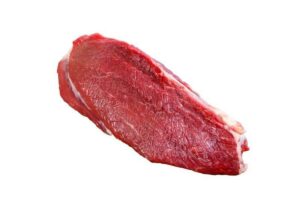
Did You Know:
The term “London Broil” originally referred to a cooking method rather than a specific cut of meat. It likely originated in North America in the early 20th century, with various theories about its name’s origin. One theory suggests that it was named after the method of broiling or grilling meat commonly used in British cuisine. Another theory suggests that it may have been named after the English-style pubs in North America that served this dish. Over time, “London Broil” came to be associated with a specific cut of beef, typically a flank steak or top round steak, marinated and then broiled or grilled. Despite its name, the dish is not believed to have originated in London.

In Closing:
In this blog post, I continued our exploration of the final cuts originating from the Short-Loin. It’s crucial to note the interchangeable use of the terms ‘Short-Loin’ and ‘Beef-Sirloin,’ though ‘Short-Loin’ might be more commonly understood in culinary contexts. We delved into the lesser-known Oyster Steak, shedding light on this flavorful cut. In our next installment, we’ll delve deeper into the remaining cuts sourced from the Round portion of the hindquarter. Your feedback is invaluable to us, so please share your thoughts by clicking the ‘Click Here to Send Us Your Comments on This Post’ link below. Thank you for joining us on this journey!
